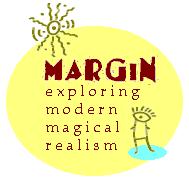
B O O K R E V I E W
IMAGINATIVE LITERATURE:
E X T R E M E F I C T I O N ' s d e l i c i o u s l y p e r i l o u s l a n d s c a p e

BY TAMARA KAYE SELLMAN

B O O K R E V I E W
IMAGINATIVE LITERATURE:
E X T R E M E F I C T I O N ' s d e l i c i o u s l y p e r i l o u s l a n d s c a p e

BY TAMARA KAYE SELLMAN
Robin Hemley and Michael Martone, editors
EXTREME FICTION: Fabulists and Formalists
© 2004
Longman, 352 pp.
$26.67 Paperback
WHILE THE editors of this anthology aim specifically to reach literature students with this anthology, I would go further and recommend it to any writer—in a writing program or otherwise—who is attempting to master the world of nontraditional fiction writing. Extreme Fiction is a highly accessible, well-chosen group of stories that not only help to define nontraditional writing, but serve to celebrate and flaunt its best side, as well.I am a fan of well-written introductions to collections and anthologies. The one written by Hemley and Martone is not, perhaps, the most impassioned I've read, but it is extremely useful and no-nonsense. A brief but clear exploration of literary conventions, starting with realism and moving beyond, makes this book an incredible tool.
Definitions abound, as they should, in a collection of work moving into "nontraditional" territory. (Magical realism is not the only category of writing suffering controversy every time it's discussed.) Readers of Extreme Fiction learn the differences between fabulism, surrealism, and the irreal; they are also offered a nice breakdown of fiction formalism through a discussion that differentiates metafiction, appropriation and collage. Hemley and Martone fearlessly offer a quick historical context for introducing and discussing postmodernism—fearlessly, I say, because it's uncommon to see academics heralding PoMo's legitimacy at a time when the modernists are still so very hip with literary students and programs. They are also careful to add this important disclaimer—" . . . modernism and postmodernism should not be seen as containers in which certain works reside. While helpful, such terms become restrictive and simplistic when defined or applied too rigidly."
True, true, and yet it needs constant repeating.
I also appreciated the editors' efforts at arguing against traditional and nontraditional being perceived as diametric opposites. We at Margin have long said that magical realism is not an antidote to fantasy or science fiction, nor is it trying to outdo any other kind of narrative work. It simply is what it is, an alternative, a complement. Hemley and Martone wisely write that "Within many writers both the traditional and the nontraditional co-exist." Exactly. Some of these writers don't even acknowledge this in their own work; Toni Morrison and Gabriel García Márquez are two magical realists who would insist they don't embody the category at all.
Extreme Fiction has an amazing lineup of stories from across the deliciously perilous landscape of imaginative literature. It's Fabulists v. Formalists. In the former, they've included that classic tale from Jorge Luis Borges, "The Aleph"; the awesome "In Dreams Begin Responsibilities" by Delmore Schwartz; and Yuri Olesha's oldy-but-goody "Lyompa;" as well as works from some splendid contemporary voices: Donald Barthelme, Janice Eidus, Flann O'Brien, Luisa Valenzuela.
The Formalists section is equally strong, a great collection of stories bending rules on every page. Of immediate interest to magical realist fans: Diane Schoemperlen's "Innocent Objects," a great labyrinthine piece; Clarice Lispector's "The Fifth Story," which, while metafictional and psychological, reaches beyond even these categories into that unseen but understood narrative space she so aptly owns; and "Second Story" by R.M. Berry, which is described by editors Hemley and Martone as existing "in a postmodern limbo."
Not all of the stories in this dexterous collection fit comfortably within the realm of magical realism; some aren't magical realist at all. But the spirit of this collection is worthy of a peek by fans of magical realism. Gabriel García Márquez and his contemporaries are not the only ones testing, stretching, even abandoning the limits of realism as they take on lo real maravilloso. The efforts of all the writers in this collection attest to a continuous nudge toward an alternative casting of reality and deserve an equal share of respect for their efforts.

margin home | contents | links | reading list | marginalia | contributors | staff | guidelines | kudos | subscriptions | contact us
Layout, design & revisions
© Tamara Kaye
Sellman, Webmaster
Active home URL:
http://www.magical-realism.com
(also:
https://www.angelfire.com/wa2/margin/index.
html)
TERMS OF USE: This site contains copyrighted materials, including but not limited to text and graphics. You may not use, copy, publish, upload, download, post to a bulletin board, include in any weblog or otherwise transmit, distribute or modify any elements of this site in any way, except that you may download one copy of such contents on any single computer for your own personal, non-commercial use, provided you do not alter or remove any copyright, author attribution or other proprietary notices.